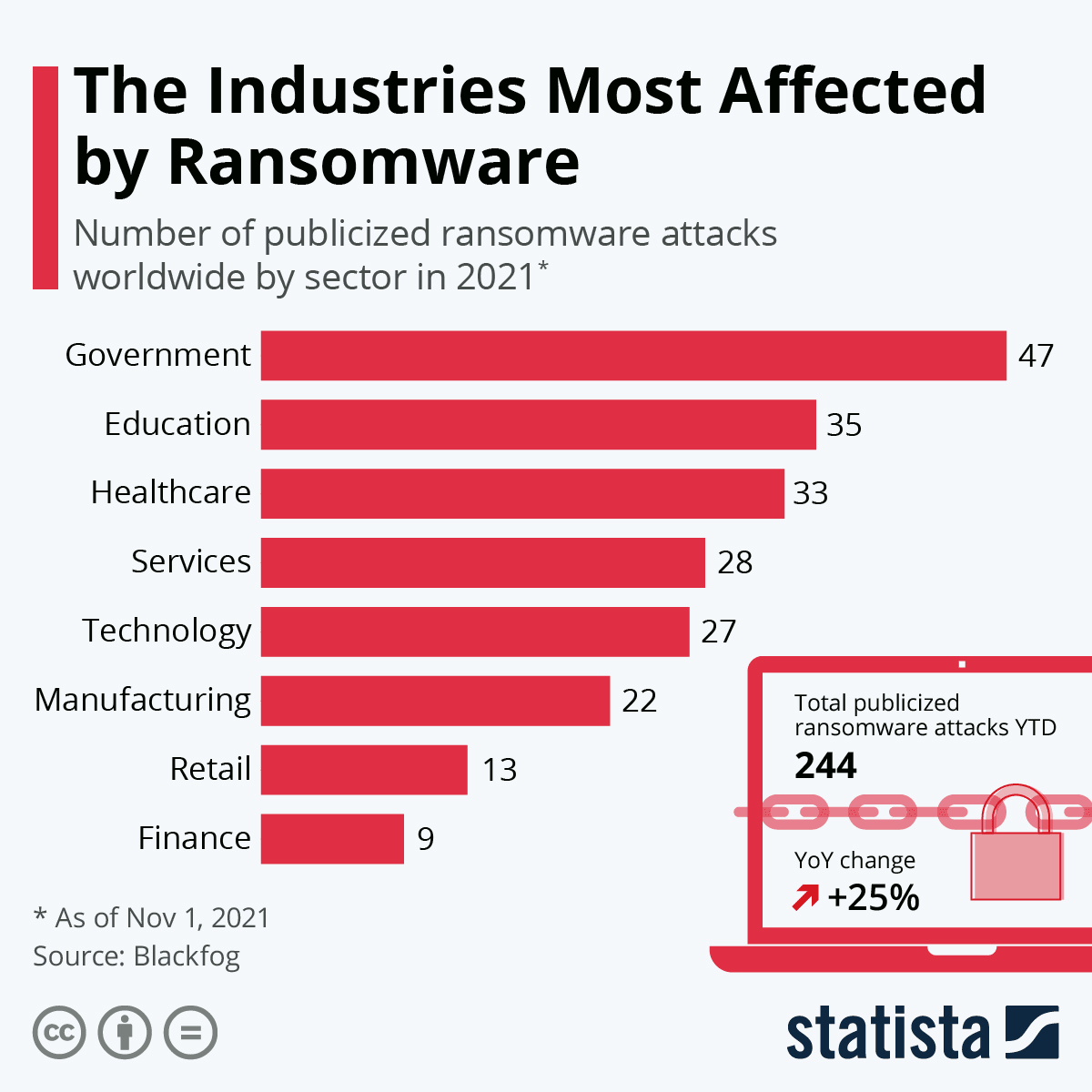According to Fierce Education, there were 1,851 data breaches in educational institutions between 2005 and 2021. Higher Education is a growing target for threat actors because universities develop and collect a wide variety of information that is highly desirable by threat actors. Students, faculty, alumni, donors, and administration all provide a lot of sensitive information that includes personal information (DOB, SS#s, etc.,), financial data, and even healthcare records. In addition, many universities are engaged in various forms of research, some of which is funded by governments and military. Nation state attacks originating from countries like Russia, North Korea and China have increasingly targeted higher education institutions for this reason in recent years.
When you combine a more open network infrastructure that encourages bring-your-own-device (BYOD), including support for any IOT or gaming systems, and a huge spectrum of operating systems and applications with a limited security staff and budget, there are huge security gaps that are introduced.
Also, colleges and universities must conform to several regulatory compliance requirements including from the Payment Card Industry (PCI) and Healthcare Information Portability and Accountability Act (HIPAA). Additionally, Title IV schools that provide federal financial aid programs are legally required to provide certain levels of security as outlined by the Gramm-Leach Bliley Act (GLBA) and the Family Educational Rights and Privacy Act (FERPA). Non-compliance with these requirements may lead to an institution losing Title IV funding.
Data exfiltration and Ransomware (often with data stolen first) are the primary objectives of most threat actors. In fact, according to the World Economic Forum and Blackfrog, educational institutions were second to only government agencies in being targeted by ransomware attacks.

As the cyber security market continues to evolve there is a lot of hype and promises that have been introduced making it difficult for security and certainly non-security practitioners to take the necessary steps to prevent data theft and/or ransomware attacks from successful detonation. In a nutshell, Higher Education Institution’s IT and Security Teams need to research and evaluate the most visionary SIEM and XDR solutions for:
Bottom line: Our colleges and universities need more context, more automation, and faster answers to shut down compromised systems based on phishing attacks, stolen records and research, and to prevent downtime and unexpected costs due to ransomware.
Good news: Gurucul can help! We have a cloud-native Next Generation SIEM that provides real-time visibility and detection, prioritized investigations, and automated response across the entire SOC lifecycle. Request a demo at your earliest convenience – you deserve to be using the best SIEM platform.
